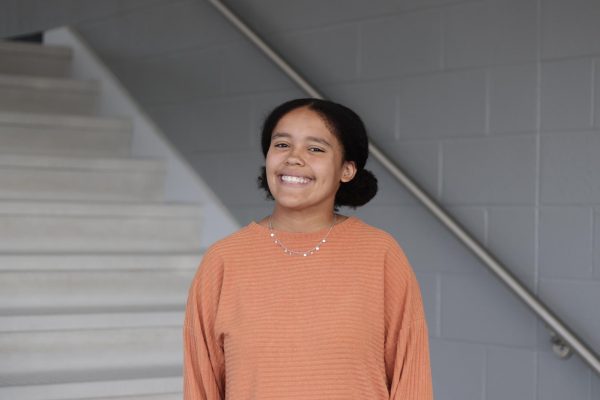Snapchat released a free Chatbot feature last winter, which allows users to communicate with an AI through the app. However, after reported instances of glitching and unsettling responses, students are becoming increasingly concerned about interacting with Snapchat AI.
According to Snapchat Support, the purpose of the AI tool is to answer user questions and create ideas for a topic or an event, such as dinner suggestions.
“I have used Snapchat AI about four times,” senior Barbra Cardenas said. “I have used it to come up with a team building idea for one of my classes, seen its responses to certain scenarios, and made it edit my essay, to see how good an editor it was.”
Snapchat AI shares many features that human users have, such as a customized bitmoji — also known as an avatar — and the ability to communicate with multiple users at a time. However, Open AI’s ChatGPT generates all responses, with additions made by Snapchat headquarters.
“I’ve never used Snapchat AI before,” senior Emma Perez said. “It feels weird to talk to something that is not a real person.”
According to CNN, since its initial release, users have reported multiple malfunctions within the chatbox. One Snapchat AI posted a video without the user’s consent, which was unheard of for an AI. Others left cryptic messages or avoided answering the questions altogether.
Senior Beatriz Cavour described the behavior of AI as creepy and acknowledged that it can be untrustworthy on some occasions.
Another large concern from users is its storage of data. SnapChat AI does track location if already shared in Snapchat. Even those in “Ghost Mode,” which hides the bitmoji on Snap Map, may still have their general location shared. However, Snapchat AI can not be removed from the chat section unless users upgrade to a Snapchat 1 Subscription, which costs $3.99 a month.
“It scares me that [Snachapt A] could know my location at any time,” Perez said.
Approx. 38.9% of Snapchat users are between the age of 18-24, and 20% are from 13-17 years old. As a result, a majority of users have an undeveloped prefrontal cortex, which determines judgments, feelings, and actions, according to the National Library of Medicine. Cardenas worries about Snapchat AI’s impact on the younger generation.
“I honestly don’t understand the whole purpose behind it, especially because it’s on Snapchat,” Cardenas said. “The need to replace a human connection is not the best, and AI lacks humanity. I also know there have been past issues of hacking and glitches so it’s not completely secure for younger generations to use.”
Perez agrees that AI may have negative effects on teenagers and adolescents.
“AI can be a good thing if it is kept to a certain number of people,” Perez said. “However, as 17-year-olds I think we are too young to be using tools like this.”
Snapchat AI is one of the many artificial intelligence advancements made over the past few years. Other social media apps, such as X, have transitioned to AI to improve the timeline recommendations, though do not yet have the chat box feature. Cardenas is optimistic about the future of technology.
“The progress being made in AI is a good thing, it shows how we continue to advance in innovation which will become a tool that facilitates lives and learning,” Cardenas said.






